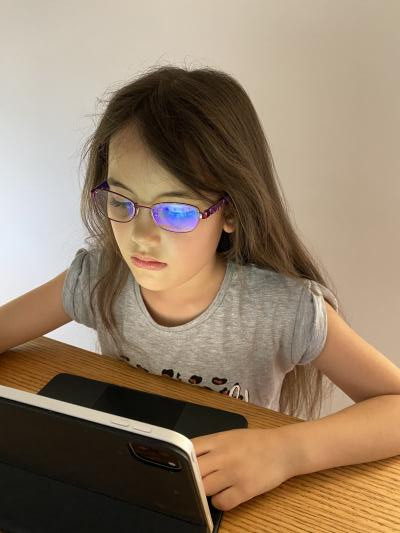During Covid-19 lockdown restrictions, more people were working from home and, of course, many kids were doing remote learning for school. This led to a sharp increase in screen time for many of us, kids included, which led to a myriad of eye problems including eye strain and dry eyes. Even when restrictions have eased, getting your children’s eyes tested should be on the to-do list before the next school year begins. Optometrist Gemma Cowan is here to tell us more.
Is it true that too much screen time is bad for children’s eyes?
Absolutely! And not just kids, many adults could benefit from taking regular breaks from screen time also. But kids in particular have a very malleable focussing system for their eyes, and staring at a screen for long periods of time tends to get the focus stuck in the one place. This can lead to kids over focussing their eyes, which leads to eye strain and fatigue. If left unchecked, this may eventually lead to vision difficulties in the distance too.
What symptoms should parents be looking for?
Parents should be on the lookout for their kids rubbing their eyes, complaining of red, watery eyes, complaining of headaches or sore eyes, or possibly even closing one eye. If your child is experiencing eye strain they may be reluctant to do near tasks towards the end of the day, or have difficulty concentrating. Your child’s school teacher will sometimes point these symptoms out to parents as they are quite often noticeable in the classroom setting.
Are there any tips or tricks that can reduce eye strain from too much screen time?
The good news is that there are absolutely things parents can do to help reduce eye strain. Firstly, parents can observe how far away their children hold their devices – many kids hold their technology very close to their faces. And yes, kids have the ability to focus on screens much closer than adults, but just because you can do something doesn’t mean you should! The closer the screen, the more demand it places on the eyes focussing system. So encourage your child to hold their devices further away from their eyes, about 40-50cm. And I also recommend regular breaks from screen time. Follow the rule of 20s: look away into the distance for about 20 seconds every 20 minutes, and take a good break for at least five minutes every hour.
What about blue light glasses?
Blue light glasses have been receiving a lot of press lately, but they don’t address the underlying focussing problems unless they include a prescription. I always recommend getting your children’s eyes tested first to have a thorough focussing and eye assessment. Your child may require eye exercises, or prescription glasses to help their vision, which could then include an optical quality blue light filter if required.
When is the best time to get an eye test for kids?
Any time! I can test kids’ eyes at any age, but I definitely recommend having a full eye test before starting primary school, about age 4-5 is ideal. All school aged children should have an eye test every couple of years as their vision may change quite rapidly but they don’t always tell their parents if they are having vision difficulties.
For more information visit Gemma at Beaconsfield Eyecare 45 Wallace Street Beaconsfield, phone 8726 9977 or visit www.beaconsfieldeyecare.com.au








